Cambridge Shorts preview: ‘a healthy mix of the weird and wacky’
Seth Jordan previews the sixth selection of short films by Cambridge students ahead of the festival on Friday night

Now in its sixth iteration, Cambridge Shorts is preparing for another showcase of outstanding student filmmaking. Transforming the ADC Theatre into a cinema for one night, Shorts will, on Friday 16th March at 11pm, host six films made by current and recently graduated students. The selection is an eclectic smorgasbord of films, dealing variously with love and relationships, memory, art, skate parks, and oozing paint.
Hosted by Footlights regular Ania Magliano-Wright, the evening will be a healthy mix of the weird and wacky and the genuinely moving, Cambridge’s blossoming film scene producing some works of inspiring quality. Here are previews for the six films on show:
The Forgotten
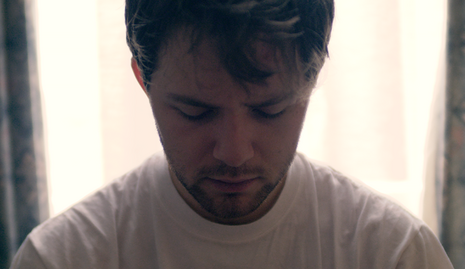
At director Rowan Hall Maudslay’s request, we cannot reveal too much about The Forgotten. “It’s about memory loss,” is all he says. Recalling Christopher Nolan’s Memento but eschewing the “gimmicks” of “black-and-white”, Maudslay has created a short that deftly jumps between past and present without losing sight of the emotion at its core. Through clever lighting and sound design, The Forgotten presents the traumatic memories of the central character, played by Will Bicknell-Found, with vivid intensity.
The film is entirely without dialogue and demonstrates the value of experimentation, something explored through colour correction and sound layering. Maudslay, next year’s CFA Technical Officer, was effusive in his praise of Cambridge’s “incredible” resources but has plans to simplify equipment access which is currently “a big hurdle stopping people from getting into filmmaking”. The Forgotten is one of the more personal films on show, and is a great example of how to balance a narrative that is both complicated and moving.
Let It Out!
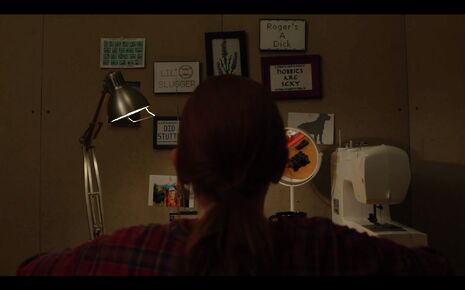
This short is made by Canadian exchange student Lyndon Hanrahan and follows Emma and Daisy, “fantasy operators at ‘Cathars-it!’ - the hotline halfway point between therapy and phone sex”. Built on a concept in the vein of Black Mirror, Let It Out speaks to the divide between digital remove and real-life contact. Though not dealing with the culture of Tinder, the film subtly reveals the way modern dating can exacerbate “projections of interiority”. Hanrahan talks about “how people reconstruct relationships and interpret them in order to fit into a narrative they’ve created”, the nightmare of the read-and-unanswered message paralleling the fragile artifice of a ‘Cathars-it!’ call.
The film jumps back and forth between fantasy sequences and reality, Hanrahan linking Emma’s imagination to her office through the recurring visual motif of the office water cooler, which appears by a bedside and between a couple at dinner. He made the film for only £200, a remarkable achievement and testament to his directorial tenacity. It is an original and superbly realised story.
To hear more about Let It Out, listen to Lyndon’s interview on CamFM film show ‘Two Man Cinema Club’ at www.camfm.co.uk/shows/two-man-cinema-club
Based on a True Story
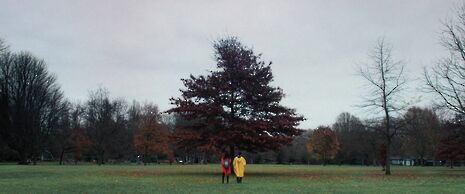
This short, conceived and directed by twins Jack and Gabriel Whitehead, follows the story of Henri and Verity, “two amateur photographers who chance upon a competition to take a photo of ‘The Truth’”. A discussion of art and pretension, it “delves deep into the world of aesthetics, celebrating all that is unknown and subjective, in a world where the line between fact and fiction is increasingly blurred”.
The film is visually stunning, colourful, and well-composed. Locations around Cambridge are used to great effect, the two leads’ bright raincoats jumping out from the drab backdrops of an autumnal city. Drawing inspiration from regular Wes Anderson cinematographer Robert Yeoman and Buster Keaton, Based on a True Story is a playful look at the impossible search for truth that amuses and intrigues.
Midnight Forest Canal
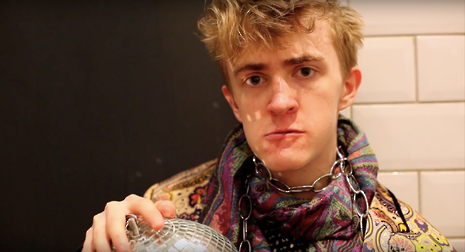
“Think of it as Narnia, but more psychedelic,” says director Johnny King. Probably the wackiest of the bunch, this film is a skewed look at dating through the disorientating lens of alternative reality and a “Serendipitous Serpent”. It makes extensive used of subtitles, representative of the “nightmarish” litany of pick-up lines and attempts at charming small talk. Digitised, frenetic music, composed by King himself, sets the mood, playing “a more active, almost aggressive role” in the storytelling. Tying the film together tonally, the music makes “disorientating scenes seem a lot more coherent” and brings a wild energy throughout.
Made with no funding whatsoever, King assembled a band of over thirty people to act and collaborate on ideas. Although “nobody gets it completely, myself included”, the film is always entertaining and often brilliant in its mad creativity. This short is perhaps the best reflection of the self-starting spirit that brings a film from idea to reality. King expresses this best himself: “Perfection is not a healthy way to work on student productions in general; there are no perfect actors, no perfect cinematographers, no perfect directors, and no perfect writers here. It’s about looking at things constructively and getting the best out of people.” Midnight Forest Canal is part of a longer series so this is not the last we will see of its hallucinatory world.
All The Busy Ings
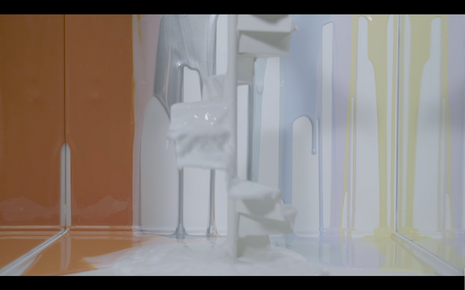
Paint oozes into a white room. All The Busy Ings was easy to summarise but considerably harder to make. Conceived by Robyn Wilton from an earlier experimental interactive art piece, the film is a mesmeric visual feast to be seen on the big screen. It was shot on a miniature set of a houses with white walls, chairs, and windows into which Wilton poured “many liquids of different viscosities such as milk, cream, paints, treacle, and wax, to see how they interacted with each other”.
The film increases in pace as it goes along, eventually exploding into life in a climatic blast of trippy music, fast edits, and vibrant, distorted colours. Wilton received funding from Random Acts, a Channel 4 series that has featured the work of Tim Key and Laura Marling, and has worked with ARU graduates on a stunning and wholly original project.
27-second Chain project

Made up of twenty-seven-second combinations of film and music, this CFA endeavour brings together an impressive mix of Cambridge creative talent. It is a series of vignettes displaying a number of styles including animation, live action, and silent film. Some narrative, some abstract, creative director and current CFA President Louis Norris set out “to start something with no defined end or set format”.
The project worked, as the title suggests, like a chain, starting with twenty-seven seconds of music to which twenty-seven seconds of film was shot. That film was then given to a different musician who scored it with a new twenty-seven seconds which was then given to a new filmmaker, and so on. Demonstrating the breadth of filmmaking possibilities in Cambridge, the makers of this short were keen to highlight the numerous opportunities made available by the CFA. As Norris says, “if you want to make a film, do it.”
Cambridge Shorts screens at the ADC Theatre on Friday 16th March at 23:00. Tickets are available here
 News / Clare Hall spent over £500k opposing busway 24 December 2025
News / Clare Hall spent over £500k opposing busway 24 December 2025 Comment / The ‘class’ of Cambridge24 December 2025
Comment / The ‘class’ of Cambridge24 December 2025 News / Caius mourns its tree-mendous loss23 December 2025
News / Caius mourns its tree-mendous loss23 December 2025 News / Girton JCR publishes open letter expressing solidarity with Palestine25 December 2025
News / Girton JCR publishes open letter expressing solidarity with Palestine25 December 2025 Comment / Yes, I’m brown – but I have more important things to say22 December 2025
Comment / Yes, I’m brown – but I have more important things to say22 December 2025









